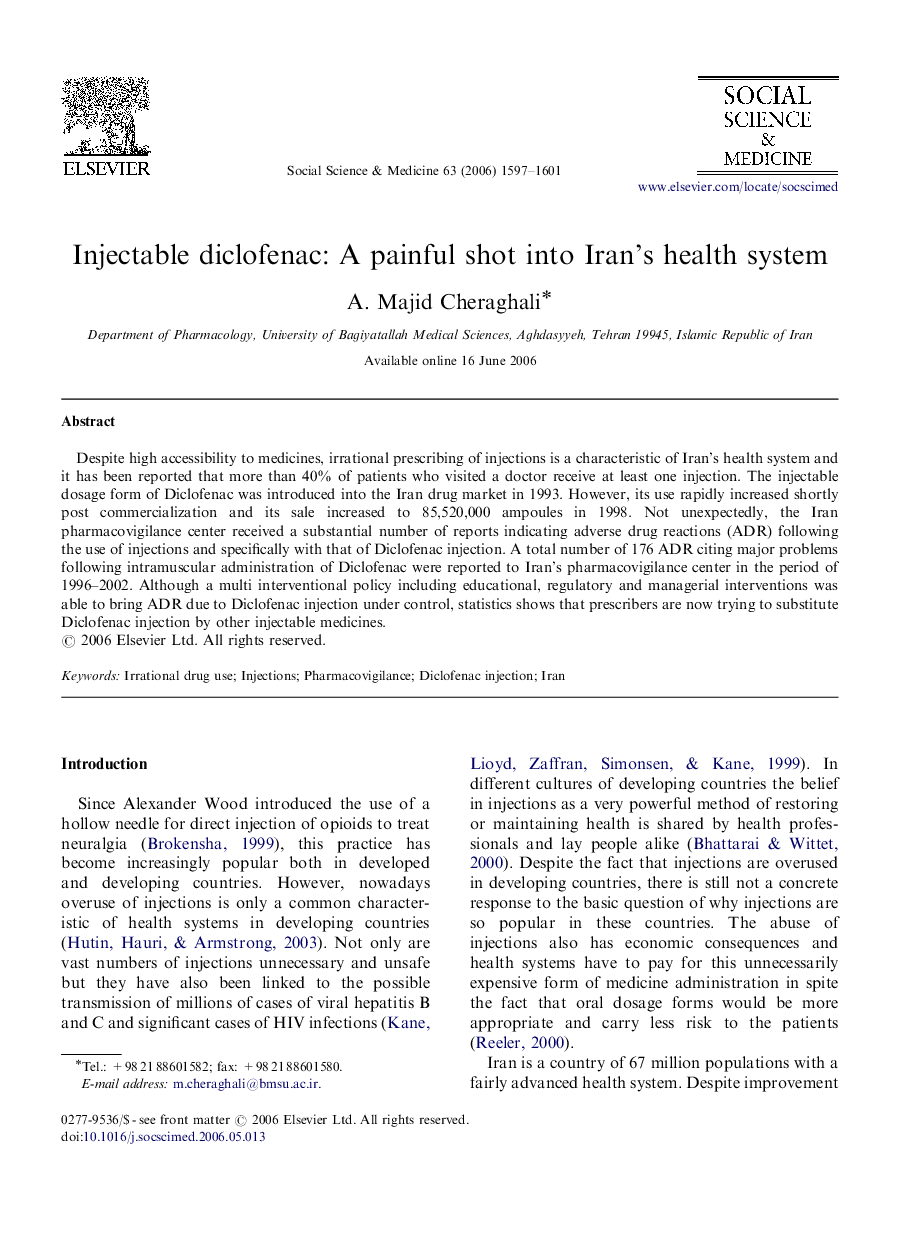| Article ID | Journal | Published Year | Pages | File Type |
|---|---|---|---|---|
| 954900 | Social Science & Medicine | 2006 | 5 Pages |
Despite high accessibility to medicines, irrational prescribing of injections is a characteristic of Iran's health system and it has been reported that more than 40% of patients who visited a doctor receive at least one injection. The injectable dosage form of Diclofenac was introduced into the Iran drug market in 1993. However, its use rapidly increased shortly post commercialization and its sale increased to 85,520,000 ampoules in 1998. Not unexpectedly, the Iran pharmacovigilance center received a substantial number of reports indicating adverse drug reactions (ADR) following the use of injections and specifically with that of Diclofenac injection. A total number of 176 ADR citing major problems following intramuscular administration of Diclofenac were reported to Iran's pharmacovigilance center in the period of 1996–2002. Although a multi interventional policy including educational, regulatory and managerial interventions was able to bring ADR due to Diclofenac injection under control, statistics shows that prescribers are now trying to substitute Diclofenac injection by other injectable medicines.
